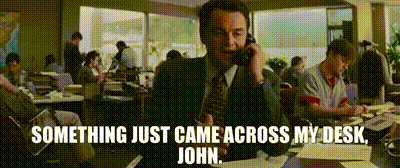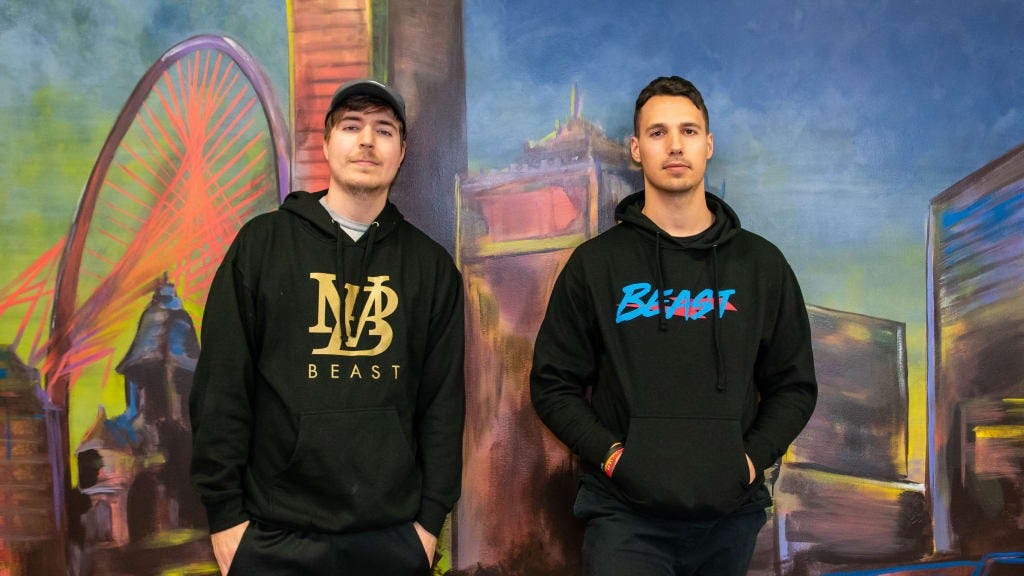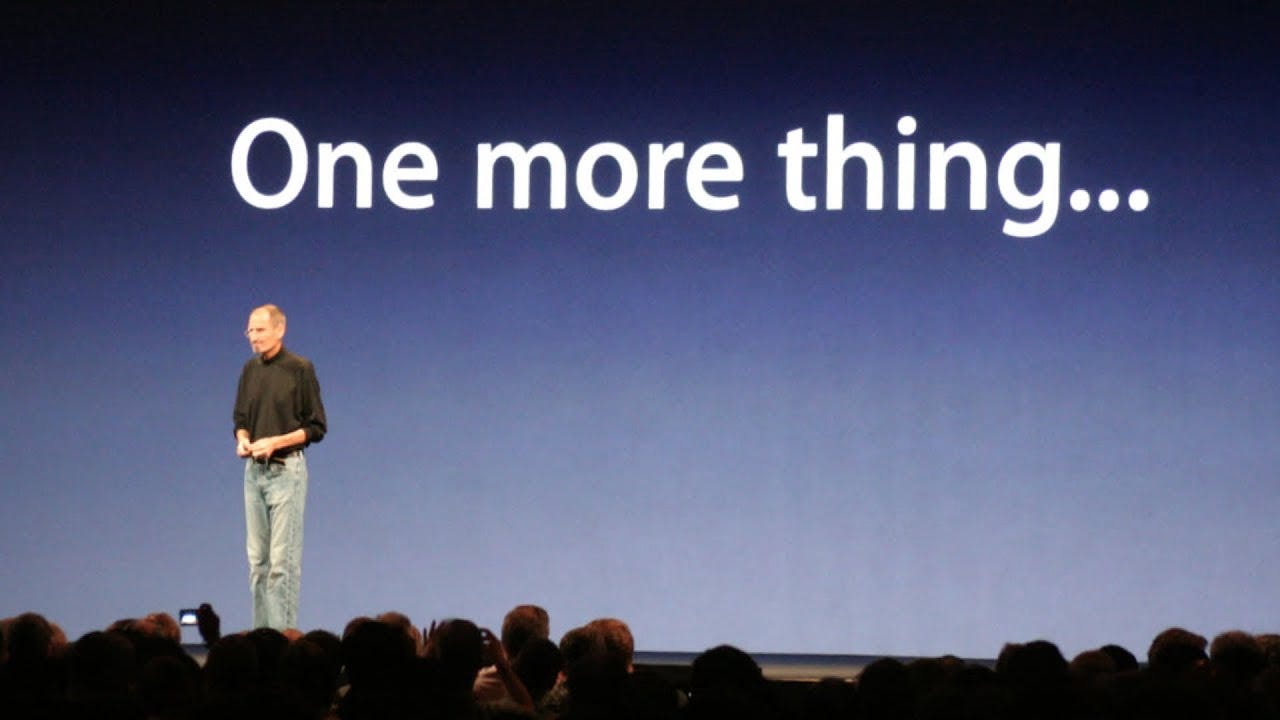My Social Media Marketing and Creator Economy Predictions for 2024
Making a case for my Top 10 social media (marketing) and creator economy predictions and shifts for 2024 - a must read for social media marketers, talent managers, content creators and brands.
Every now and then, I share my thoughts on the Social Media Marketing landscape and Creator Economy as they come, but today, I’m taking you through my biggest predictions for 2024.
Walk with me…
1. Content that Connects is King 👑
I don't know who needs to hear this, but consumers are people first…
They’re not interested in salesy content; they’re looking for people to connect with and content to resonate with.
Don’t believe me?
Let’s take a look at the stats…
After sleep and rest, adults in the UK spent an average of 3 hours and 44 minutes each day on entertainment, socialising, and other free time activities in March 2023 (NatCen & the Office for National Statistics)
Recent studies have also shown that the average person spends approximately 4 hours on leisure activities daily and that more than half of this time is on social media (GWI.com).
This suggests:
The socializing experience is increasingly taking place online
Users are not only seeking entertainment when they enter the digital space
They're seeking comfort and companionship
So what does that mean for creators and brands in the context of the creator economy and the social media marketing landscape at large, you ask?
Let’s break it down 👇🏾
2. For Creators: Break the 4th Wall 🧱
As an English graduate, I often find myself applying storytelling styles and dramatic techniques to understand social media marketing phenomena with which I resonate.
Breaking the 4th Wall is my latest observation, which can be defined as:
When a creator or brand acknowledges the existence of their audience by speaking to them directly and actively encouraging them to partake in the story unfolding in front of them.
Long term, this usually also involves establishing a shared language, in-group activities and general insider knowledge.
They do this by not just showing their audience their world but:
Allowing them to experience it
Allowing them to shape it
So ‘you’ and ‘me’ become ‘we’
Video content on social media is a great way to do this, as visuals allow you to feel as though you are occupying the same space, and the comment section enables viewers to reply, facilitating conversation.
Learn more about what this looks like in practice in my case study on Alix Earle, which explores how she successfully leverages this tactic in her content.

This is not to say companionship can’t be built through written content.
In fact, I believe many creators who only create video content will use platforms that mainly facilitate written content in 2024 to expand their range of touchpoints.
Twitter/X, Threads and Telegram will be used for brevity and real-time connectedness
Newsletters, blogs, and guest articles will allow them to share their thoughts in a more organized and in-depth way
3. For companies: Connect First 🧲
My word for companies looking to connect with their audience is:
Act like a Media Company, Think like an Anthropologist
As a result of this desire for companionship, brand affinity will become a greater priority.
Brands will no longer solely rely on traditional ads and direct sales - because they can’t.
Instead, they will approach marketing as anthropologists, studying their ICP’s (Ideal Customer’s Persona/s) culture.
This looks like:
Exploring how they act and uncovering their rituals (practices)
Noting how they speak to each other
Digging deeper into what they talk about
Using these insights, they’ll uniquely package these conservations into HERO content and distribute them on the platforms where their target audience congregates.
Examples of what this could look like: Foot Asylum’s Does The Shoe Fit draws on wing-man and dating culture, and PLT’s Pink Court Room plays with storytime/TL drama and oversharing, confessional culture.
These video series are not about selling products but sparking conversation and facilitating iconic creator-crossover moments.
Such pieces of content usually have high reach AND engagement as they connect with their audiences by placing:
Familiar scenarios
Discourse topics
and content creators in front of them
Thus, the brand can meaningfully connect with the viewers as they:
Replicate the conversations viewers would have in their existing communities
Provide opportunities to spend more time with their favourite creators
Aren’t being transactional, instead providing value for free
These positive viewing experiences compound over time to increase brand affinity and sentiment, which helps to grow a hyper-engaged community and boosts consideration - leading to potential sales.
Buying into the brand becomes a no-brainer because the thought process is:
People like us have conversations like these
People like us rock with brands like this
People like us buy from brands like this
As a result of the above, brands will start thinking of and treating themselves as media companies.
To do this, they will either build their own in-house teams or partner with publishers, full-service media houses and studios.
4. In-house and B2B/C creators 🎨
This shift towards media company-like operations will lead to more businesses hiring in-house creators or creating B2B/C influencers out of existing employees.
For some, it may be due to budget (they can’t afford to hire influencers regularly) or exclusivity (they want to have a face associated only with their brand).
Alternatively, in-house creators may also be used to supplement the use of influencers and UGC creators.
I think they should be used in the following ways:
Product Demos
Swatches
Enthusiastic educational pieces (agitate the pain and emphasize benefits)
TikTok Lives (live giveaways, flash sales, pack orders live, answer Qs etc.)
Showcasing the BTS and the brand’s culture
Some of this should be paid and boosted, and product reviews should be limited to influencers or UGC creators for obvious reasons.
5. More Publishing and Licensing Agreements 🤝
Following on from my media company prediction, I predict that more social media platforms will partner with media companies and creators on content publishing and licensing agreements.
One platform that has set a precedent for this is Pinterest.
Last year, Pinterest and Condenast signed a global content partnership, which means that Vogue and Architectural Digest will produce over 160 exclusive videos aligned with Pinterest’s key seasonal and cultural moments.
These moments include Fashion Month, Wedding Season, Summer and Back to School.
This follows their multi-million dollar strategic partnership with Tastemade in 2022, which was designed to ‘scale creators, content series, and live streaming on Pinterest’.
Partnering with media companies over creators is attractive because they have the creator mentality AND:
access to resources needed to produce high-quality content speedily
a track record of success in engaging various demographics through digital content, which is a priority for platforms as they seek to attract advertisers
Nevertheless, Creators who operate as mini media companies will also benefit from this shift as they will be able to sign similar publishing or licensing deals with platforms and brands, such as Spotify.
6. A Rise in Creator Operators ⚙️
As many established creators are teams of one, I predict they will start hiring Creator Operators to add structure, future-proof their business, increase revenue - and focus on the parts they love!
Creator Operators* will work with them on the backend of their business to:
establish and streamline processes
take over financial and administrative operations
expand revenue-generating activities and scale their impact
This is a step up from traditional management, which usually focuses on attracting and managing brand deals and sometimes on broader strategic development.
Great examples of this include Reed Duscher (Mr Beast’s Manager) and Jordan Schwartzberger (Co-founder of Arcade Media and Manager of the Sidemen).
*Credit to starterstory for coining this term.
7. Monetization opportunities to increase 💸
This is not limited to influencers and content creators but includes anyone who creates content online: solopreneurs, publishers, creative collectives etc.
Creator Economy Funds/Grants:
I predict more funds and grants will be set up this year to empower the creator economy.
Notably, these funds won’t be limited to influencers and content creators, similar to Pinterest’s Creator Inclusion Fund, which was for all ‘content producers’, including Publishers, digital magazines, and content / creative collectives.
This is to encourage creatives to not only pursue solopreneurship but to also consider collaborating to start next-gen media companies, agencies and houses.
More monetization programmes & a content creator boom:
Around 5% of Internet users create content online, whilst the other 95% strictly consume it.
To address this, over the last few years, many new monetization programmes have been set up to incentivize users to post content and grow their community - from TikTok’s Creator Fund to Twitter/X’s ‘Super Follow’ and Creators Ad Revenue.
In 2023, we also saw LinkedIn invest $25 million into its Creator Accelerator Programme, and Snapchat introduced their Revenue Share Program while partnering with notable figures such as Khloe Kardashian, Alix Earle, and Chloe Bailey.
All of the above have also continued to encourage content creation by:
increasing their creator tools (e.g. CapCut)
and recognizing creators through features such as Top Voice Badges
As a result of investment in these areas and reduced barriers to entry, we will see a boom in content creators across social media.
It will be most noticeable on Linkedin and will lead to a resurgence of Snapchat.
More Investment in Influencer Marketing
44% of advertisers plan to increase spending with content creators in 2024, and Brands anticipate increasing creator content budgets by 25% in 2024 (IAB.com).
Nano and micro-influencers and UGC creators will benefit most from this.
This is because nano and micro-influencers usually have higher engagement than their counterparts. Yet, their overall follower count means they normally have a lower rate than their macro-influencer counterparts.
Likewise, UGC creators will benefit greatly as the nature of their content usually commands an even lower rate than that of influencers. Similarly, the lack of formal disclosing guidelines sometimes makes them a more appealing choice.
The above creators tend to overdeliver, often meeting or exceeding expectations when it comes to measurable metrics. Their typically lower rates in comparison to larger creators mean they also have a larger ROI.
Many companies, especially those just making the shift to influencer marketing, are looking to get the most ‘bang for their buck’.
That said, if any creator wants to remain top of mind, they must commit to establishing and maintaining relationships with key decision-makers and having a clearly defined brand and hyper-engaged audience.
The above will position you as a go-to creator, and go-to creators are ultimately in a market of their own as no one else compares.
Shift from Brand Sponsorships to Equity Partnerships
Last year, we also saw some creators diversify their income by switching from mostly brand deals and affiliate partnerships to collaborating on products in exchange for a greater percentage of revenue share.
This will continue in 2024, and we will see creators working with brands to curate bundles and edits out of existing products or collaborating on new products.
However, creators with an especially hyper-engaged following will also look to create their own product-based businesses by either:
Taking advantage of white-labelling
Working with companies and creator operators that can own the operations and business model part of this process whilst they lead on the marketing and distribution side (sometimes in exchange for equity)
Genflow is a global marketing agency that has been leading this charge for years, working with creators like Grace Beverley on her sold-out SHREDDY Supergreens and The Productivity Method range of planners and diaries.
More recently, they worked with Productivity Guru Ali Abdaal to release his own mechanical keyboards under Lightmode.
Here, Genflow leveraged a no-brainer opportunity, as mechanical keyboards are a product Ali’s been recommending for years.
This year, Genflow and similar agencies and content operators will help more creators do the same.
8. A Creative Collectives Boom 💥
In a shift away from agency models, more creatives (myself included) will set up creative collectives of talented creatives and skilled freelancers who regularly collaborate on projects.
These groups do not operate on a standard monthly payroll system and are thus not obligated to provide work for the sake of it.
Instead, they leverage this financial flexibility to build custom teams comprised of top talent to fulfil and deliver the SOW.
As mentioned before, creative funds will start recognising these groups and offer them grants to support their work in specified industries or related to particular themes.
9. New Regulations ⚖️
As the creator economy continues to evolve rapidly, I foresee:
A crackdown on those who use social media as a source of income
Last year, we saw a hint of this, with HMRC warning that resellers will start having to pay tax on revenue generated once they reach a new £1,000 threshold.
This will continue this year as the law begins to address social media's lucrative nature by unblurring the lines between what is legal and what is financial misconduct.
Further updates to advertising/sponsorship guidelines and laws and regulations
I also think the ASA (Advertising Standard Authority) will update their endorsement guides, following suit from the FTC (Federal Trade Commission), which amended theirs for the first time since 2008.
The FTC’s update addressed issues such as brand trips and disclosures on TikTok (a platform that did not exist back then).
In light of this, I predict disclosure regulations will eventually be expanded to cover the rise of UGC creators.
The creator economy has rapidly evolved over the years, so the introduction of further regulations and even statutory laws to address this is inevitable.
10. Artificial intelligence 🤖
Artificial Intelligence is here to stay.
This year, more creators and marketers alike will use AI as part of their workflow.
Some will over-rely on it, and it will be obvious — this will negatively impact their ability to engage with their audience and stunt their overall creativity.
However, the ones that will benefit most will be the ones who use it as an assistant to:
complete redundant tasks
automate processes
supplement brainstorms
enhance work they have already created
A.I influencers
I also foresee a continued rise in AI influencers. However, it won’t just be brands that ‘hire’ them; some brands will also create their own AI influencers.
These influencers will embody the personality of the brand they are associated with and will belong exclusively to them.
This will come as a knock-on effect of
The existence of AI Influencers such as Lil Miquela and Meta’s AI Chat Bots
The NPC streaming trend helping users overcome the uncanny valley
The rise of aspirational content
The rise of VR headsets and the enduring allure of choose your story adventures
The return of avatar culture e.g. Bitmojis

These avatars will be managed by more than one member of staff, replacing the reliance on actual team members to be the face of your content.
They can be used to share POV/BTS content and will empower users to influence and not only be influenced.
Netflix’s Bandersnatch and Landon’s ‘Being Beyonce’s assistant for a day’ X (Formerly Twitter) thread ran so this kind of ‘influencer’ could walk — with both pieces of content allowing users to make decisions on behalf of what is essentially an alter ego.
For example, a fashion brand or house could have its AI Influencer work Fashion Week and ask its followers to vote on real-life decisions on Instagram.
The style and visual aesthetic of the AI Influencers will vary and be on a spectrum of hyper-realistic, think Meta's Zuckerburg and Kendall 2.0, and Sophia (robot), to 2-D types ranging from Miquela-esque realism to cartoon or animated styles e.g. Courtney Confessionals from Total Drama or Animated Lizzie Maguire.
And that’s a wrap, folks! 💌
Thank you for tapping in.
It’s been a long time coming, but I really wanted to take the time to break down my thoughts for you, so I hope you found this valuable.
If you did, please share it with someone who you think would also benefit from reading it.
I would love to know what predictions you’d add to my list or if any of these surprise me - so please let me know your thoughts below.
And remember … my mailing list always eats first when it comes to Dokia insights, so if you want to be the first to hear more from us, be sure to subscribe (it’s free)!
Speak soon!
B x
For more of Blessing:
Join Dokia’s community 🦋 :














